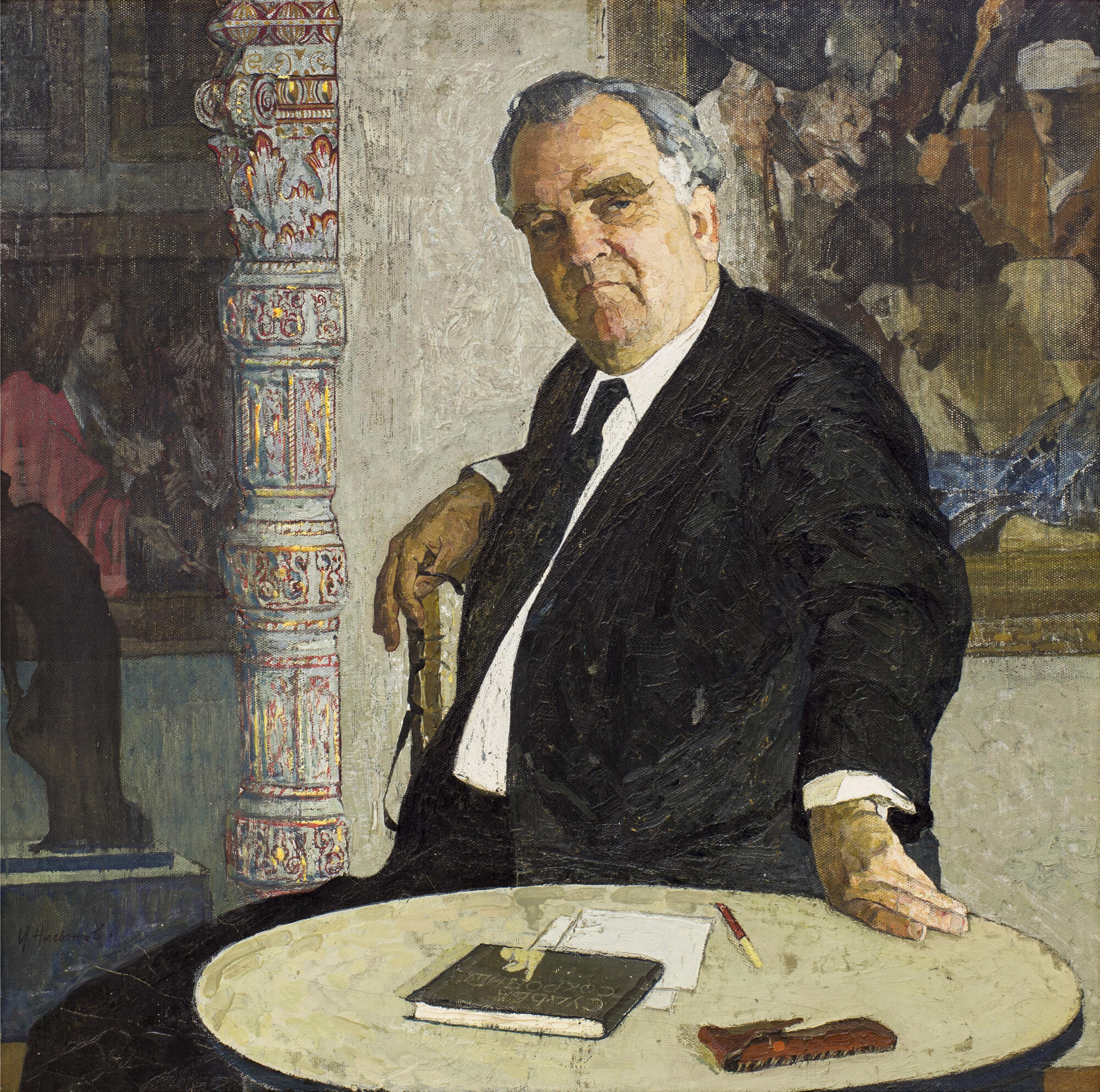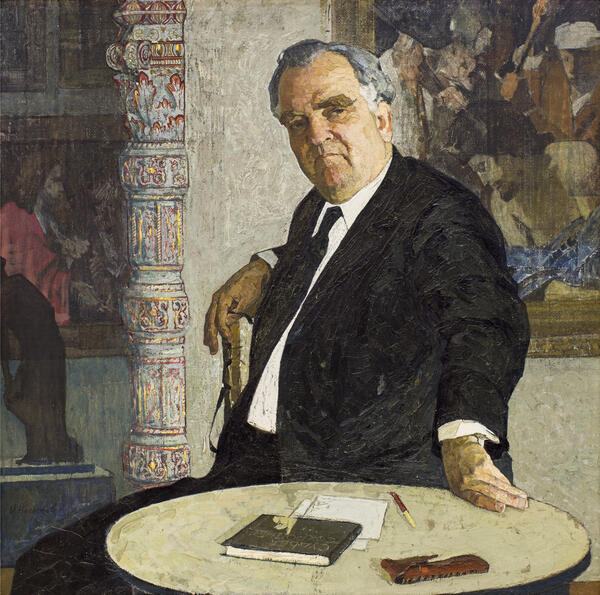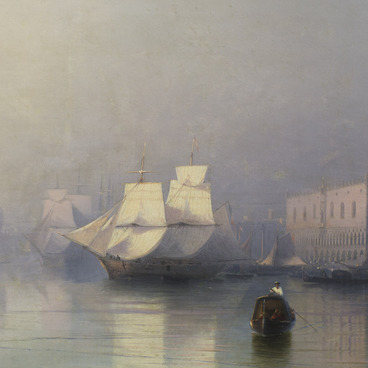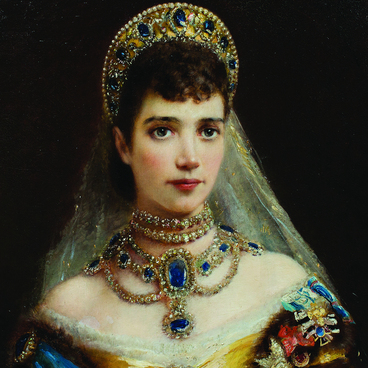Ivan Nesynov, who painted the portrait, received a professional education at an art school and was a teacher. He mainly worked in the portrait genre. The artist focused all his attention on rendering the image of the sitter with all the details of the model’s appearance, manners, and temperament.
Nesynov portrayed Alexey Fatyanov, director of the Irkutsk Art Museum in 1948–1977. Fatyanov had a knack for drawing from a very early age and later entered the Irkutsk Art School. He combined his studies with a job at an art gallery in the Museum of Local Lore, which later became the Irkutsk Art Museum. Already being a researcher, he worked as a tour guide, participated in all types of museum work. During the war, Fatyanov served in the Soviet army. After the war ended, he was offered to take over the management of the famous Ostankino Museum in Moscow. However, he refused, returned to the Irkutsk Museum, which he headed in 1948.
In the first years of his work as a director, Fatyanov showed himself to be an outstanding young manager. When he travelled on business to the capital, he managed to collect an astounding number of works of art — about 2,000, “two whole railroad cars”, in his own words. Gradually, over the years when Alexey Fatyanov was the director of the museum, the collection increased four times. Moreover, he was able to arrange the new premises, one of buildings being located in the very center of the city.
Alexey Fatyanov discovered the Siberian portrait — an idiosyncratic cultural phenomenon. In the 1950s, the collection was in jeopardy, and many of the works were in danger of being disposed of. Fatyanov saved the paintings. In the 1980s, an exhibition of Siberian portraits with exhibits from museums and private collections in Siberia was held in Irkutsk.
Alexey Fatyanov did much more than only managed the museum. He initiated the opening of the Irkutsk branch of the Moscow restoration workshops named after I. E. Grabar and became its first director. The branch restored exhibits from all museums from the Urals to the Far East. Fatyanov was also an active member of the Society for the Protection of Monuments and in the early 1960s influenced the decision to restore the Cathedral of the Epiphany, one of the oldest churches in Irkutsk.
Once Fatyanov headed simultaneously two large Irkutsk museums that had art and local history collections. He paid much attention to the study of the history of Irkutsk and Siberia. However, the Irkutsk Art Museum remained his main area of work until the very end.
Nesynov portrayed Alexey Fatyanov, director of the Irkutsk Art Museum in 1948–1977. Fatyanov had a knack for drawing from a very early age and later entered the Irkutsk Art School. He combined his studies with a job at an art gallery in the Museum of Local Lore, which later became the Irkutsk Art Museum. Already being a researcher, he worked as a tour guide, participated in all types of museum work. During the war, Fatyanov served in the Soviet army. After the war ended, he was offered to take over the management of the famous Ostankino Museum in Moscow. However, he refused, returned to the Irkutsk Museum, which he headed in 1948.
In the first years of his work as a director, Fatyanov showed himself to be an outstanding young manager. When he travelled on business to the capital, he managed to collect an astounding number of works of art — about 2,000, “two whole railroad cars”, in his own words. Gradually, over the years when Alexey Fatyanov was the director of the museum, the collection increased four times. Moreover, he was able to arrange the new premises, one of buildings being located in the very center of the city.
Alexey Fatyanov discovered the Siberian portrait — an idiosyncratic cultural phenomenon. In the 1950s, the collection was in jeopardy, and many of the works were in danger of being disposed of. Fatyanov saved the paintings. In the 1980s, an exhibition of Siberian portraits with exhibits from museums and private collections in Siberia was held in Irkutsk.
Alexey Fatyanov did much more than only managed the museum. He initiated the opening of the Irkutsk branch of the Moscow restoration workshops named after I. E. Grabar and became its first director. The branch restored exhibits from all museums from the Urals to the Far East. Fatyanov was also an active member of the Society for the Protection of Monuments and in the early 1960s influenced the decision to restore the Cathedral of the Epiphany, one of the oldest churches in Irkutsk.
Once Fatyanov headed simultaneously two large Irkutsk museums that had art and local history collections. He paid much attention to the study of the history of Irkutsk and Siberia. However, the Irkutsk Art Museum remained his main area of work until the very end.



